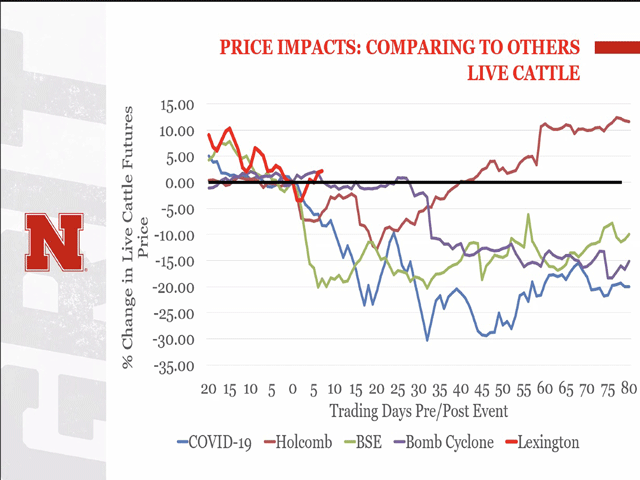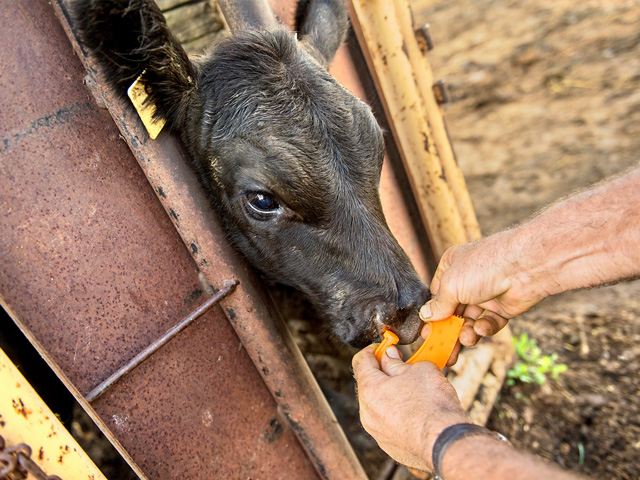Weaning Ways
There's More than One Way to Wean a Calf
Judging by the hollering, bellering and fence walking that occurs, weaning definitely rates as the most stressful time in a calf's life. It is expensive, too, and not just because of busted fences and bent gates.
When calves are stressed, it sets off a chain reaction that includes higher levels of the stress hormone cortisol. That can impact gains, hamper the natural immune function and even keep vaccines from working as well as they should.
"We need to prevent anything that keeps that calf from getting nutrients into his body," says Warren Rusche, South Dakota State University Extension beef feedlot management associate. "Stress leads to disease. Disease leads to losses."
Keeping weaning stress at manageable levels is possible, and there's no one best way.
FENCE LINE WEANING
"We incorporate fence line weaning into the routine," says Mary Ellen Hicks, veterinarian and animal science professor at Abraham Baldwin Agricultural College (ABAC.) "We bring the cows and calves in to weigh them, then sort them into adjoining pastures."
P[L1] D[0x0] M[300x250] OOP[F] ADUNIT[] T[]
The cows and calves in the spring calving herd can still see, hear and smell each other, but the hog wire fence separating them keeps the calves from nursing. The calves have feed bunks in their bermuda and bahiagrass pastures where they get a mix of pelleted corn gluten and soy hulls, along with high quality home grown alfalfa and bermudagrass haylage.
The ration meets all the requirements for a good weaning ration; nutrient dense, palatable, and digestible. Corn gluten is a great source of protein and energy with around 25% crude protein and 80% TDN, while soy hulls are an excellent source of digestible fiber, with an NDF of 67, 12% crude protein and 78% TDN. The alfalfa/bermudagrass haylage is also extremely high quality and palatable, running around 180 on Relative Forage Quality (RFQ). At current prices, the half and half pellet mix is averaging around $160 a ton.
"They'll eat more the first day because they don't realize their mamas aren't right there," says Doug Hicks, Mary Ellen's husband and head of ABAC's beef unit. "The second day they want to stand around and holler. Then, they start picking back up. By the time we ship them they are eating at least five lbs. per head per day."
CALF NOSE WEANERS
These plastic weaners slip onto the nose of the calf, allowing him to eat, drink, and hang out with his mama but making it hard for him to nurse. Many producers who use these put in the weaners when they give calves their first round of vaccinations. They are removed at booster time. By then the calves are satisfied to be on their own for the most part. Weaners cost around $1.75 to $2.25 each and are reusable.
TRADITIONAL WEANING LITE
Scotty Lovett used fence line weaning for four years, but with 350 cows in five herds and only one central working facility, it just wasn't practical. "Weaning took a month by the time we weaned each herd, they calmed down, we moved them out, then brought in the next herd." The extra time and labor made it rough on Lovett and his family since they row crop, too.
Weaning the fall born calves happens in June at the Cuthbert, Georgia, operation, and when he fenceline weaned, the calves had to stay in the corral while cows were in the adjoining pasture. Lovett usually lost a calf or two each year due to complications from the heat and dust. Now he separates the cows and calves, vaccinates the calves and preg checks the cows, moves the cows back to their home farm, and turns the calves out on fresh pasture the same day.
"You have to have a good electric fence, and we occasionally have one get out, but it works good," he says. "The calves go straight to the shade when we turn them out." Now, he very rarely has any death loss or has to treat any animals.
Lovett feeds a Total Mixed Ration of home-grown peanut hay and ground corn, as well as purchased soyhull pellets. The ration averages around 10% crude protein, 62% TDN, and costs around $1.18 per head per day. In addition, they get free choice minerals. They also benefit from grazing bahia and bermudagrass pastures. "We don't push them but they gain around 1.5 to 2.0 lbs. a day," he says.
When he gets them back up in four weeks for their booster vaccinations, he sorts the steers into a heavy and light group and sorts the heifers into replacement and feeder heifers. Then they don't have to be sorted again before they are videoed in August for sale.
DON'T STRESS OVER WEANING
"A lot of cow/calf producers are intimidated by weaning," says South Dakota's Rusche. "We had a 1,000 head backgrounding lot at home so I'm not one of them. If you are set up to do fence line weaning, there is probably less stress but I'm more concerned with timely weaning and getting good quality nutrients in them."
"Work with a nutritionist to set up a ration," he emphasizes. He recommends one with 50 to 75% concentrate, 12 to 14% protein, and 46 to 56 Mcal NEg.
He also says, "Have a good set of facilities, don't put them in a mud pen, do a really good job of low stress handling when you're hauling, sorting and working them, and make sure you observe Beef Quality Assurance (BQA) protocols when you're giving vaccinations. The vaccines won't do you any good if you leave them sitting out in the hot sun."
(c) Copyright 2020 DTN, LLC. All rights reserved.






